|
Printing
plays an important role in our daily lives. It is usually
carried out on expensive digital printing machines,
which more often than not are owned by large companies. A
few decades ago, before the advent of large-scale digital
printing, there was a considerable number of small printing
firms that produced all of our daily needs. They used litho
and letterpress printing machines which were operated by
skilled printers who produced work of a high standard.
Wolverhampton had many small printing
forms and several large concerns including Steens Limited,
Alfred Hinde Limited, and Whitehead Brothers (Wolverhampton)
Limited.
The first member of the Whitehead
family to go into printing was Jim Whitehead, who began an
apprenticeship in 1872 at Barford and Newitt of Queen
Street, a small local company. During his time there, he
printed all kinds of stationery, bills of sale, letterheads,
books, and even gilt-edged cards. He thoroughly learned all
aspects of the printing trade and found that he also had a
talent for business management, which would soon be put to
good use. |
|
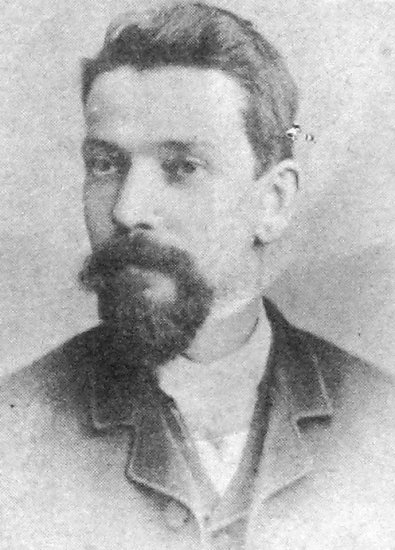
Jim Whitehead. |
|
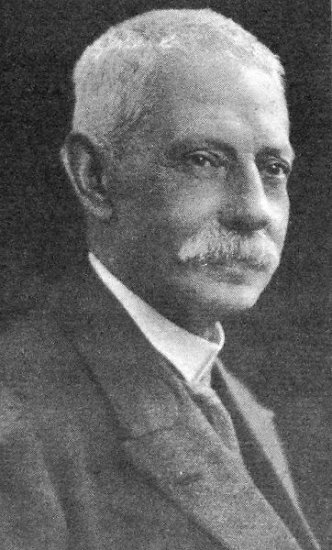
Tom Whitehead. |
 |
In 1881, Jim and his brother Tom, bought a printing
business that had been run by Tom Jones, a small jobbing
printer, based at 32 King Street, Wolverhampton. The King
Street shop was a modest affair with only one
hand-operated printing machine.
In 1896, they opened a
second printing works in St. John’s Square and acquired
the town’s first mechanical press, powered by a gas
engine. Regular work included printing the "Postal
Clerks Herald", the official journal of the Post Office
Workers Union.
In 1902, they purchased the first
linotype machine to be owned by a jobbing printer and
had a lot of work, including printing the
Wolverhampton Journal magazine, which was edited by G.
Ernest Jeffries and printed on their new Miehle machine.
The magazine was published monthly, had 30 pages and
sold for one penny.
It appeared regularly until 1910
when publication ceased, because there was no editor or
editorial staff left to continue it. |
|
By this time, Jim’s sons James and
Archibald had joined the business. James, subsequently spent
some years in Canada. On his return to Wolverhampton in 1919, he re-joined the business. Whitehead
Brothers (Wolverhampton) Limited was incorporated on the
10th July, 1922. One of the firm’s notable orders in 1923
was for the printing of Westlake's History of Westminster
Abbey, beautifully illustrated and printed on hand-made
paper. In 1927, Whiteheads opened another printing works in
Raglan Street, where wallpaper books were printed. In 1928,
James' son Leonard took charge at Raglan Street and ran that
side of the business until 1938.
Another member of the family who was
involved in the business was Tom Whitehead’s daughter, Mrs.
A. M. Piper who worked for the firm for over 40 years and
became Company Secretary. Whitehead Brothers, Limited
joined forces with Whitehead and Burton (formerly Higgitt
and Burton) of Dudley Road, with whom they had been involved
for around 20 years. |
| The firm decided to look for larger premises because of
uncertainty about the future of the works at the south east
corner of St. John’s Square, due to the council’s plans for
the building of the ring road through that side of the
square. Whiteheads soon acquired a site on Snow Hill that
had formerly been occupied by Snow Hill Congregational
Church. The church itself had to be demolished in the early
1940s after part of the gable end collapsed. Behind the
church, alongside Tempest Street was the old Sunday school
building that had been used for services until 1951 when the
church moved to Penn. The school building and the derelict
land on which the church stood were purchased by Whiteheads
and Whiteheads Building was built on the site
of the church at 26A Snow Hill. |
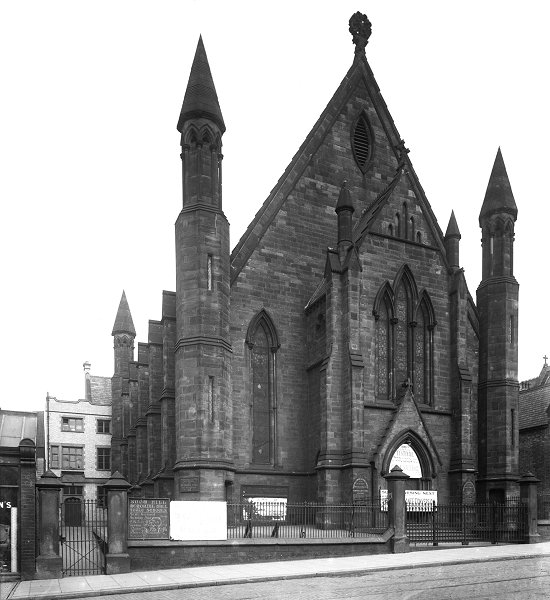
Snow Hill Congregational Church with
the school building to the left. Courtesy of Steve Martin. |
| The old school building remained and was used by the
company. When the new building opened, Col. E. Burton became
a director of the company. |
|
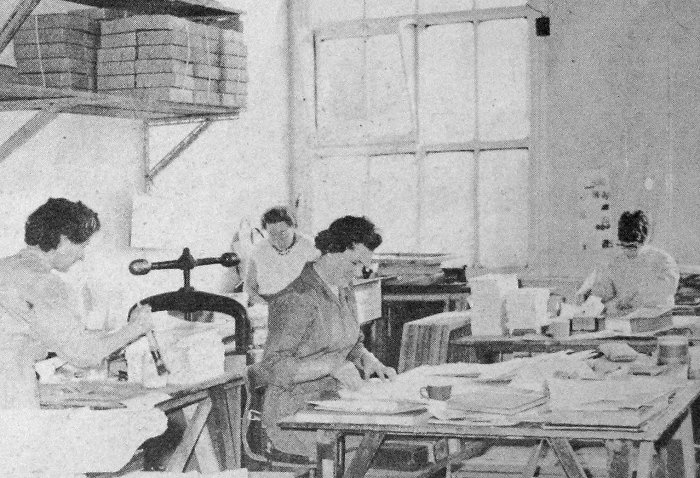
One of Whitehead Brothers' work rooms. |
|

From the 1956 Wolverhampton Red Book. |
| The new building housed some of the most modern printing
machinery in the town. The firm specialised in office and
financial stationery and colour work. The three Directors
were Mr. Leonard Whitehead, his cousin Mr. A. J. Whitehead
and Col. E. Burton. The firm also began to sell office
equipment, office furniture, typewriters, adding machines,
cash registers, all types of stationery, paper and pencils.
|
|
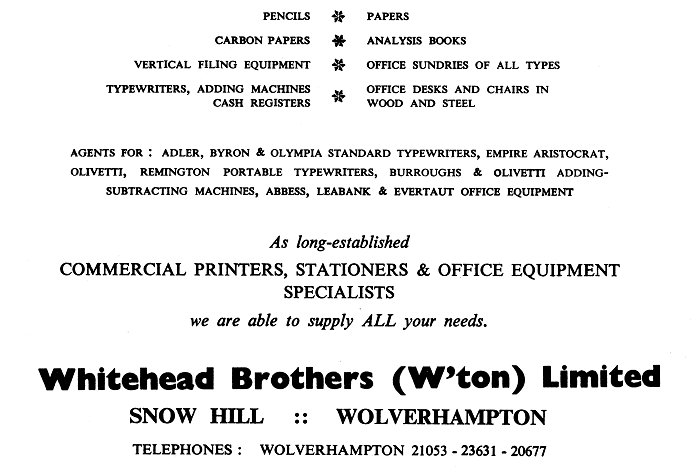
An advert from 1954. |
|
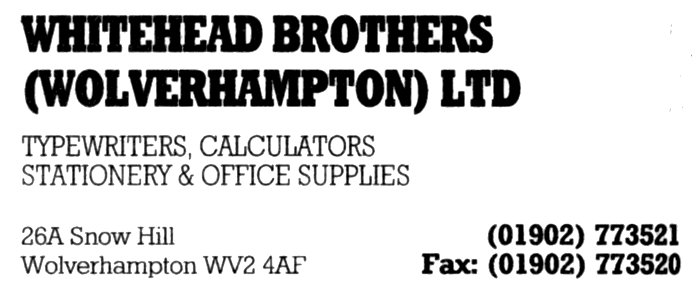
From the 1995 telephone directory. |
|
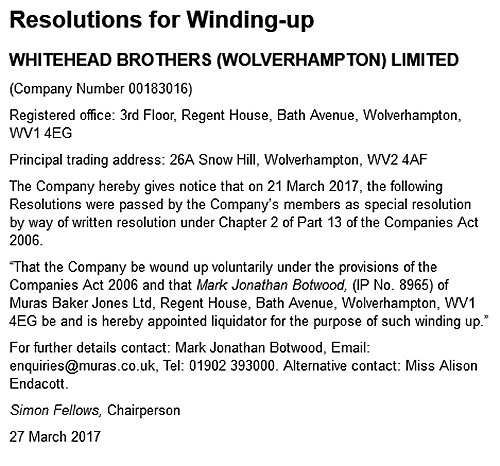
From The Gazette. |
In the early years of this century, Whiteheads began to
concentrate on letting space in the company’s buildings. The
business was described as letting and operating its own or
leased real estate. Sadly the company went into voluntary liquidation in March
2017. |
|

|
|
Return to
Local Printers |
|